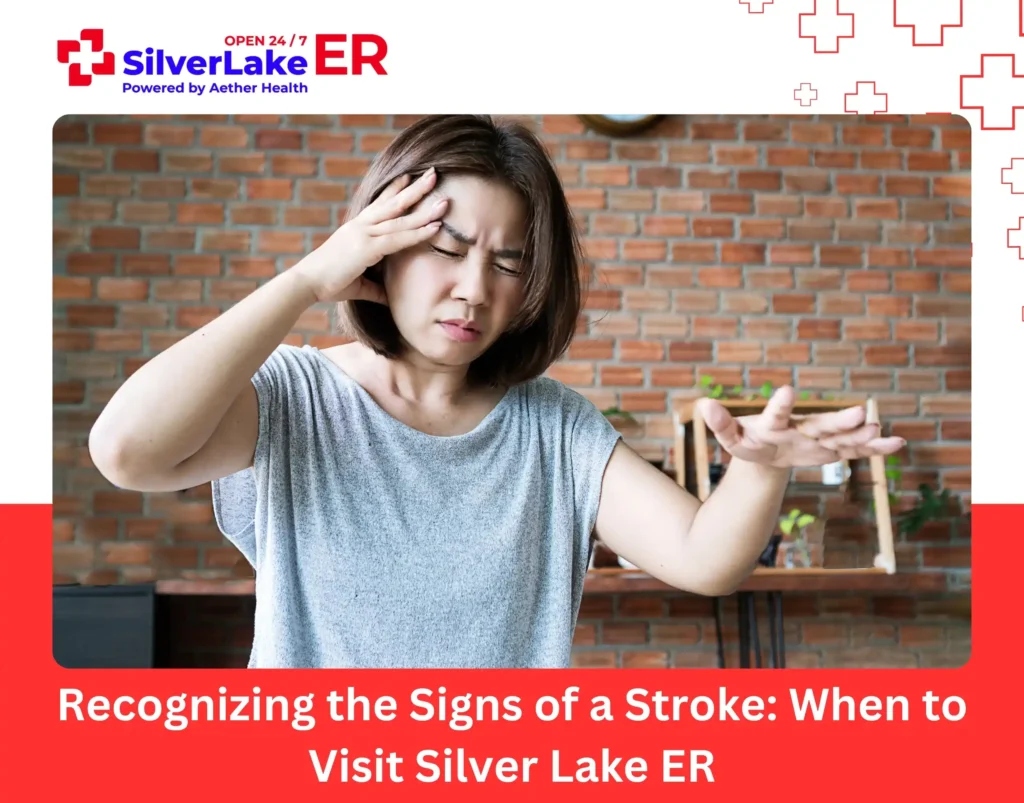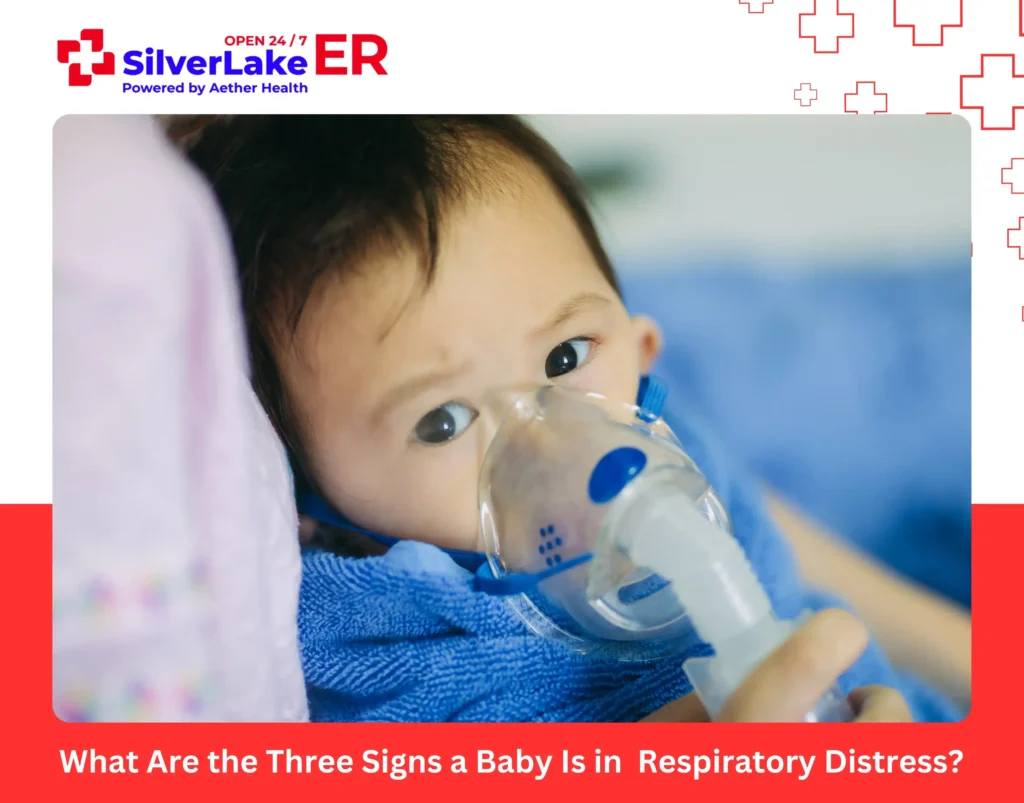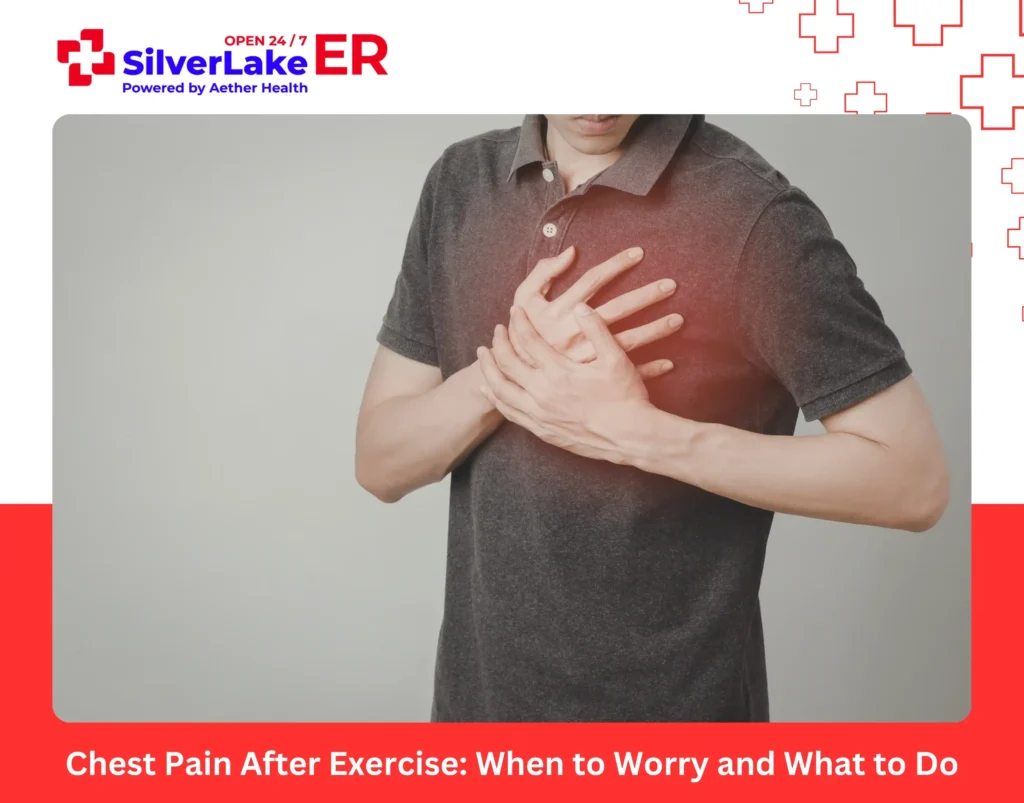Your mom tries to smile at you, but one side of her face doesn’t move right. It could be a sign of a stroke! A stroke happens when blood flow to the brain is blocked, or a blood vessel bursts. The longer it goes untreated, the more brain cells die, leading to serious damage or even death.
It is the second biggest cause of death and one of the leading causes of long-term disability.1 But if you recognize the signs of stroke, you’ll know it’s time to get to the emergency room. Reaching the Silverlake ER for stroke care within the golden window (about 3 to 4.5 hours from the first symptom) significantly improves your chances of recovery.
Once that window closes, doctors have fewer options to stop the stroke’s effects. Know the symptoms and give us the chance to treat you in time.
What Is a Stroke?
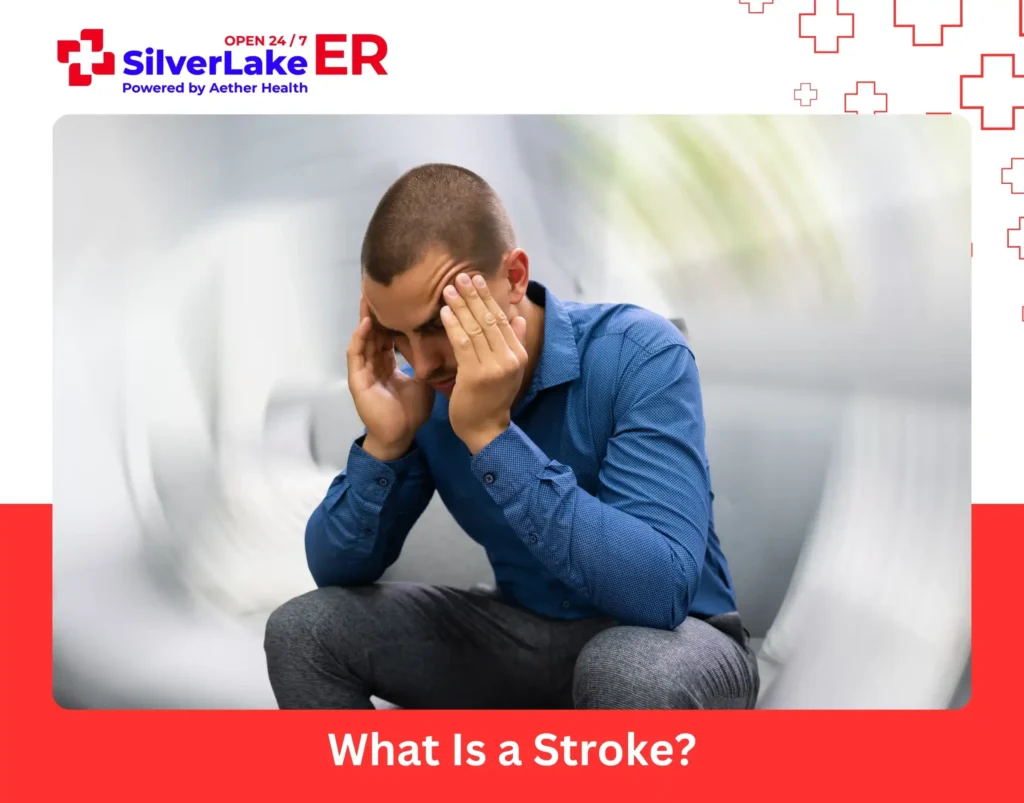
A stroke happens when blood flow to the brain is blocked or disrupted. Without oxygen and nutrients, brain cells start dying within minutes. The damage can be minor or death marked by how quickly treatment is received. There are two main types of strokes:
- Ischemic Stroke: A blood clot blocks an artery in the brain and cuts off circulation.
- Hemorrhagic Stroke: A weakened blood vessel in the brain bursts, causing bleeding (hemorrhage) in or around the brain. This bleeding puts extreme pressure on the brain, cuts off oxygen, and kills brain cells quickly. Without immediate medical treatment, it can lead to paralysis, coma, or death.
No matter the type, the sooner a person gets to the emergency room, the better their chances of avoiding permanent damage.
The FAST Way to Spot a Stroke
“FAST” is a simple way to recognize the signs of a stroke and take quick action. It’s an easy-to-remember acronym that stands for:
- F – Face Drooping: One side of the face may droop. Ask the person to smile and see if it looks uneven.
- A – Arm Weakness: One arm may be weak or numb. Ask the person to raise both arms. If one drifts downward or feels weak, that’s a red flag.
- S – Speech Difficulty: Ask them to repeat a simple sentence. If their words are slurred or don’t make sense, it’s a sign.
- T – Time to go to the emergency: If you notice any of these signs, get to the ER of Silverlake without delay. Even if symptoms go away, they need emergency care.
4 Signs of Stroke: When to Go to the ER of Silverlake
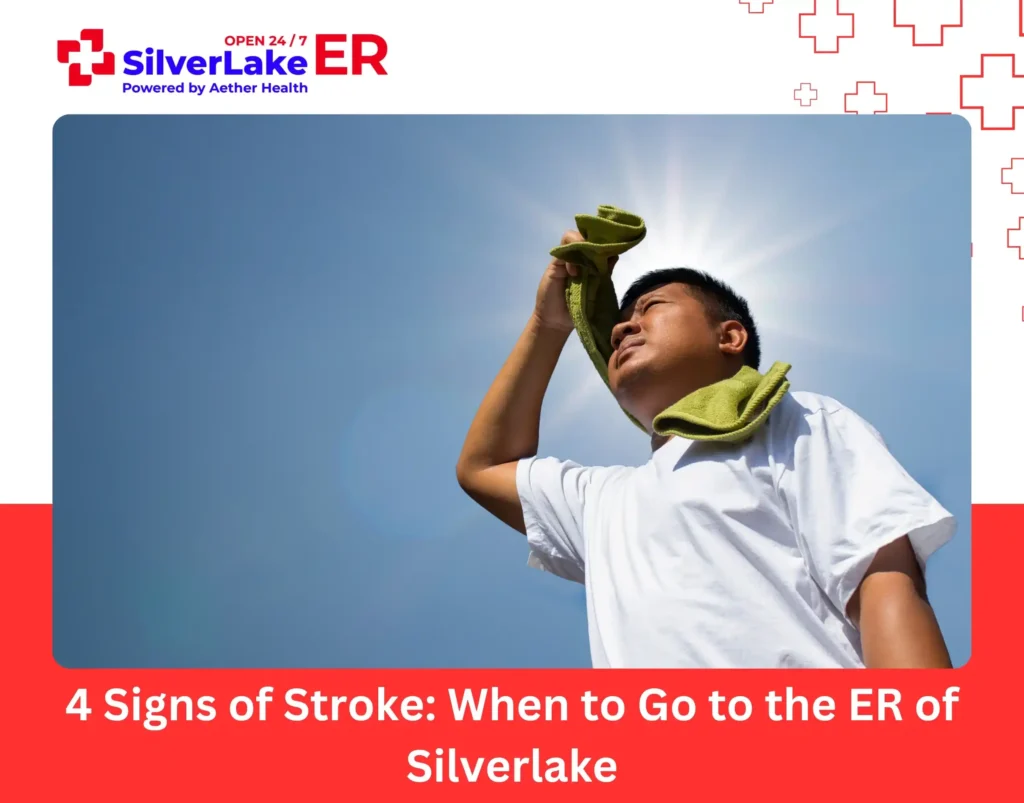
While FAST covers the most common stroke symptoms, there are other warning signs too:
1. Sudden Confusion
This happens because a stroke cuts off blood to the part of the brain that helps with thinking and talking. The person may have trouble understanding what you’re saying or struggle to find the right words.
2. Sudden Vision Problems
A stroke messes with the brain’s ability to process what the eyes are seeing. If someone suddenly has blurry/double vision or loses sight in one or both eyes, it could be a sign of a stroke.
3. Sudden Dizziness Or Loss of Balance
The person suddenly feels dizzy, like they may fall over. It’s because a stroke can hit the part of the brain that controls movement and coordination.
4. Sudden & Severe Headache
Bleeding in the brain puts pressure on sensitive areas and triggers extreme pain. The person has the worst headache ever, with no clear reason why.
If you notice even one of these symptoms, get checked immediately.
Mini Stroke: Biggest Sign of a Stroke
Mini stroke or transient ischemic attack (TIA) happens when there’s a temporary blockage in blood flow to the brain. It clears up on its own, and the brain activity returns to normal within an hour or 24 hours. So, unlike a full stroke, a TIA doesn’t cause lasting damage.
The signs are the same as a full stroke. As the mini-stroke symptoms disappear fast, people usually ignore these as stress, dehydration, or exhaustion.
Warning: A TIA is a sign that a full-blown stroke could be coming soon—within hours or days. Never ignore the symptoms, even if they disappear, and head straight to the ER.
What Happens If You Don’t Get Emergency Care for a Stroke?
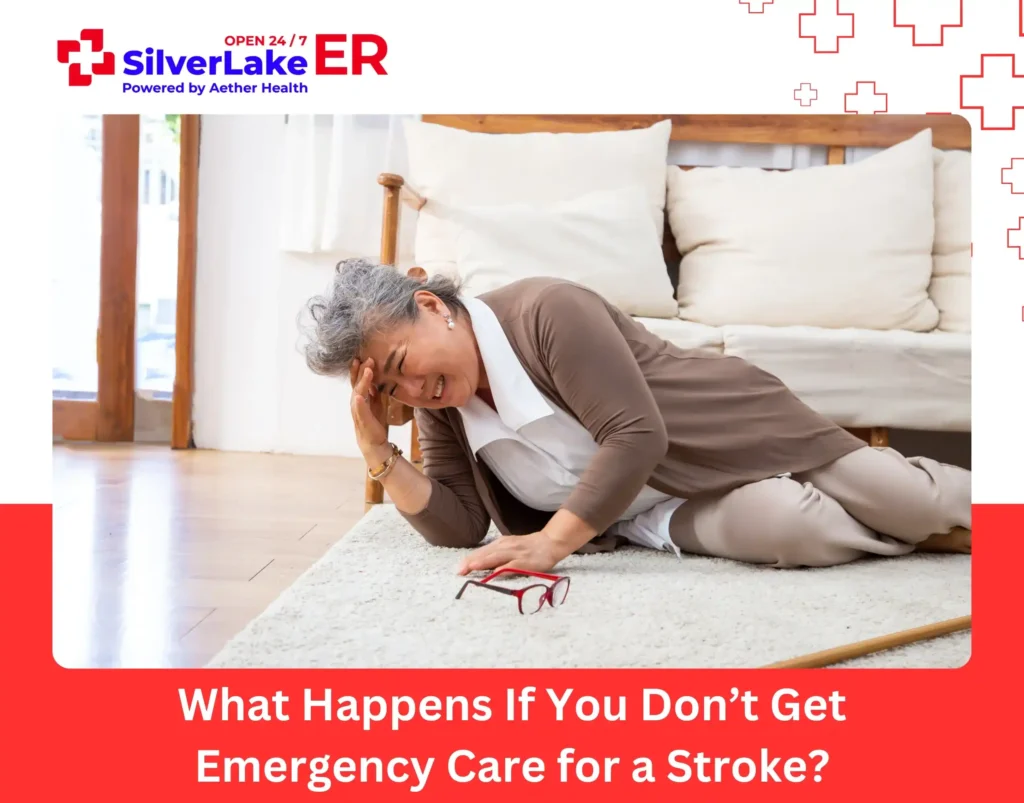
Ignoring a stroke or mini-stroke can lead to:
- Permanent brain damage
- Paralysis or loss of mobility
- Speech and memory loss
- Difficulty swallowing or breathing
- A higher chance of another stroke (worse than the first)
The Bottom Line: Be Ready to Act
Strokes can strike anyone, anytime. But now that you know the signs, you can do something about it. If you or someone around you is showing signs of a stroke, get to the ER Silverlake immediately.
The sooner treatment begins, the better the chances of recovery. We’re here 24/7 with fast, life-saving stroke care.
FAQs
1. Can I prevent a stroke?
The good news is yes. Many strokes can be prevented by making simple lifestyle changes. Keep your blood pressure in check by eating healthy, exercising, and taking prescribed medications. Focus on fruits, vegetables, whole grains, and lean proteins while cutting down on processed foods and excess salt. If you have diabetes, work with your doctor to manage it properly. Lastly, quit smoking and limit alcohol to drop your stroke risk.
2. Who is at risk for a stroke?
Anyone can have a stroke, but certain factors increase the risk. High blood pressure is the leading cause. Too much alcohol raises blood pressure, increasing the chances of a stroke. Smoking, diabetes, and heart disease contribute to poor blood circulation and add to the risk. Being overweight, not staying active, and having a family history of strokes also increase the risk.

